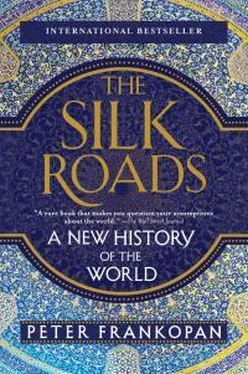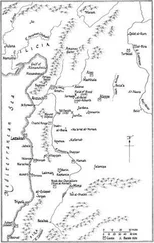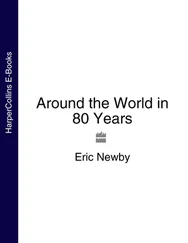It was not only goods that flowed along the arteries that linked the Pacific, Central Asia, India, the Persian Gulf and the Mediterranean in antiquity; so did ideas. And among the most powerful ideas were those that concerned the divine. Intellectual and religious exchange had always been animated across this region; now it became more complex and more competitive. Local cults and belief systems came into contact with well-established cosmologies. It made for a rich melting pot where ideas were borrowed, refined and repackaged.
After Alexander the Great’s campaigns had dragged Greek ideas east, it was not long before ideas flowed in the other direction. Buddhist concepts made rapid headway across Asia, especially after they had been championed by the Emperor Ashoka, who purportedly converted to Buddhism after reflecting on the horrific cost of the military campaigns that had created a great empire in India in the third century BC. Inscriptions from this time bear testimony to the many people now following Buddhist principles and practices as far away as Syria and perhaps beyond. The beliefs of a sect known as the Therapeutai that flourished in Alexandria in Egypt for centuries bear unmistakable similarities to Buddhism, including the use of allegorical scriptures, the devotion to enlightenment through prayer and detachment from the sense of the self in order to find inner calm.1
The ambiguities of the source material make it difficult to trace the spread of Buddhism with accuracy. Nevertheless, it is striking that there is an extensive contemporary literature that describes how the religion was carried out of the Indian subcontinent and introduced to new regions. Local rulers had to decide whether to tolerate its appearance, to stamp it out or to adopt and support it. One who did the latter was Menander, a Bactrian king in the second century BC, and descendant of one of Alexander the Great’s men. According to a text known as the Milindapañhā , the ruler was persuaded to follow a new spiritual path thanks to the intercession of an inspirational monk whose intelligence, compassion and humility stood in contrast to the superficiality of the contemporary world. It was enough, apparently, to convince the ruler to seek enlightenment through Buddhist teachings.2
The intellectual and theological spaces of the Silk Roads were crowded, as deities and cults, priests and local rulers jostled with each other. The stakes were high. This was a time when societies were highly receptive to explanations for everything from the mundane to the supernatural, and when faith offered solutions to a multitude of problems. The struggles between different faiths were highly political. In all these religions—whether they were Indic in origin like Hinduism, Jainism and Buddhism, or those with roots in Persia such as Zoroastrianism and Manichaeism, or those from further west such as Judaism and Christianity, and, in due course, Islam—triumph on the battlefield or at the negotiating table went hand in hand with demonstrating cultural supremacy and divine benediction. The equation was as simple as it was powerful: a society protected and favoured by the right god, or gods, thrived; those promising false idols and empty promises suffered.
There were strong incentives, therefore, for rulers to invest in the right spiritual infrastructure, such as the building of lavish places of worship. This offered a lever over internal control, allowing leaders to form a mutually strengthening relationship with the priesthood who, across all the principal religions, wielded substantial moral authority and political power. This did not mean that rulers were passive, responding to doctrines laid out by an independent class (or in some cases caste). On the contrary, determined rulers could reinforce their authority and dominance by introducing new religious practices.
The Kushan Empire, which stretched from northern India to embrace most of Central Asia in the first centuries AD, offers a case in point. There, the kings patronised Buddhism, but they also forced its evolution. It was important for a ruling dynasty that was not native to the region to create a justification for their pre-eminence. To do so, ideas were blended together from a range of sources to form a lowest common denominator that would appeal to as many as possible. As a result, the Kushans sponsored the building of temples— devakula , or “temples of the divine family”—which developed the concept that had already become established in this region, that rulers linked heaven and earth.3
Menander had earlier announced on his coinage that he was not only a temporal ruler but also a saviour—something so significant that it was noted in both Greek ( soteros ) and Indic script ( tratasa ) in bilingual legends on his coins.4 The Kushans went further, establishing a leadership cult that claimed a direct relation to the divine, and created distance between ruler and subject. An inscription found at Taxila in the Punjab records this perfectly. The ruler, it states boldly, was “Great king, king of kings and Son of God.”5 It was a phrase that has obvious echoes with the Old and the New Testaments—as does the concept of the ruler being a saviour and a gateway into the next life.6
In what was tantamount to a revolution in Buddhism around the first century AD, a transformation took place in the way that that faith shaped the daily life of its adherents. In their most basic, traditional form, the teachings of the Buddha were straightforward, advocating finding a path from suffering (Sanskrit: duḥkha ) that led to a state of peace ( nirvāna ), by means of following eight “noble paths.” The route to enlightenment did not involve third parties, nor did it involve the material or physical world in any meaningful way. The journey was one that was spiritual, metaphysical and individual.
This was to change dramatically as new ways of reaching a higher state of consciousness emerged. What had been an intense internal journey, devoid of outside trappings and influences, was now supplemented by advice, help and locations designed to make the path to enlightenment and Buddhism itself more compelling. Stupas or shrines ostensibly linked to the Buddha were built, becoming points of pilgrimage, while texts setting out how to behave at such sites made the ideals behind Buddhism more real and more tangible. Bringing flowers or perfumes as an offering to a shrine would help achieve salvation, advised the Saddharmapundarīka , often known as the Lotus Sutra , that dates to this period. So too would hiring musicians to “beat drums, blow horns and conches, pan-pipes and flutes, play lutes and harps, gongs, guitars and cymbals”: this would enable the devotee to attain “buddhahood.”7 These were deliberate efforts to make Buddhism more visible—and audible—and to enable it to compete better in an increasingly noisy religious environment.
Another new idea was that of endowment—specifically endowments granted to new monasteries springing up across the routes fanning out from India into Central Asia. Donating money, jewels and other gifts became common practice, and with it the concept that donors would be “carried over the oceans of sufferings” as a reward for their generosity.8 Indeed, the Lotus Sutra and other texts of this period went so far as to list which precious objects were most suitable as gifts; pearls, crystal, gold, silver, lapis lazuli, coral, diamonds and emeralds were all considered highly acceptable.9
Large-scale irrigation projects in the valleys of what are now Tajikistan and southern Uzbekistan built around the turn of the eras show that this period saw rising affluence and prosperity as well as increasingly vibrant cultural and commercial exchange.10 With wealthy local elites to turn to, it was not long before monastic centres became hives of activity and home to scholars who busied themselves compiling Buddhist texts, copying them and translating them into local languages, thereby making them available for wider and larger audiences. This too was part of the programme to spread the religion by making it more accessible. Commerce opened the door for faith to flow through.11
Читать дальше











